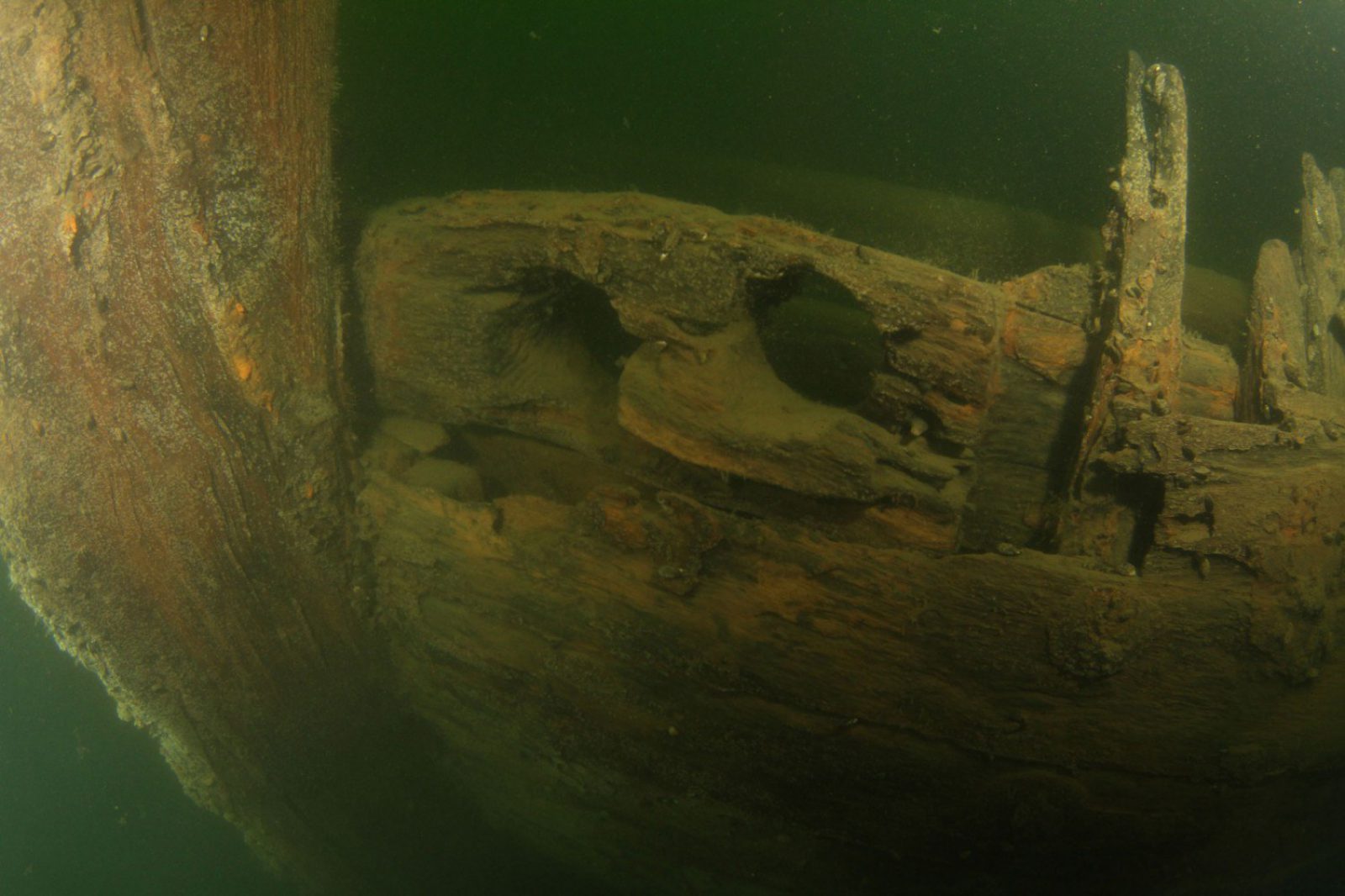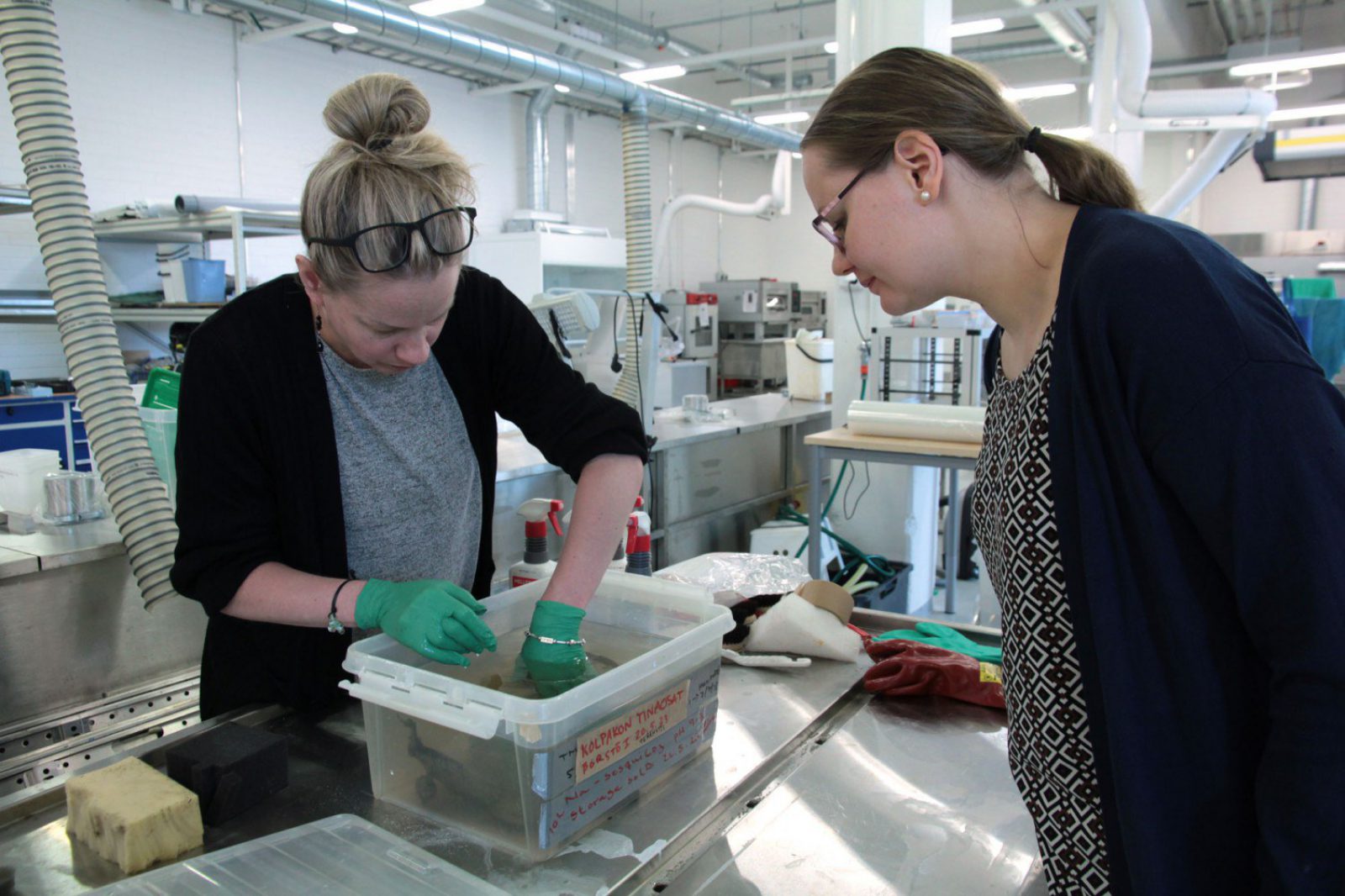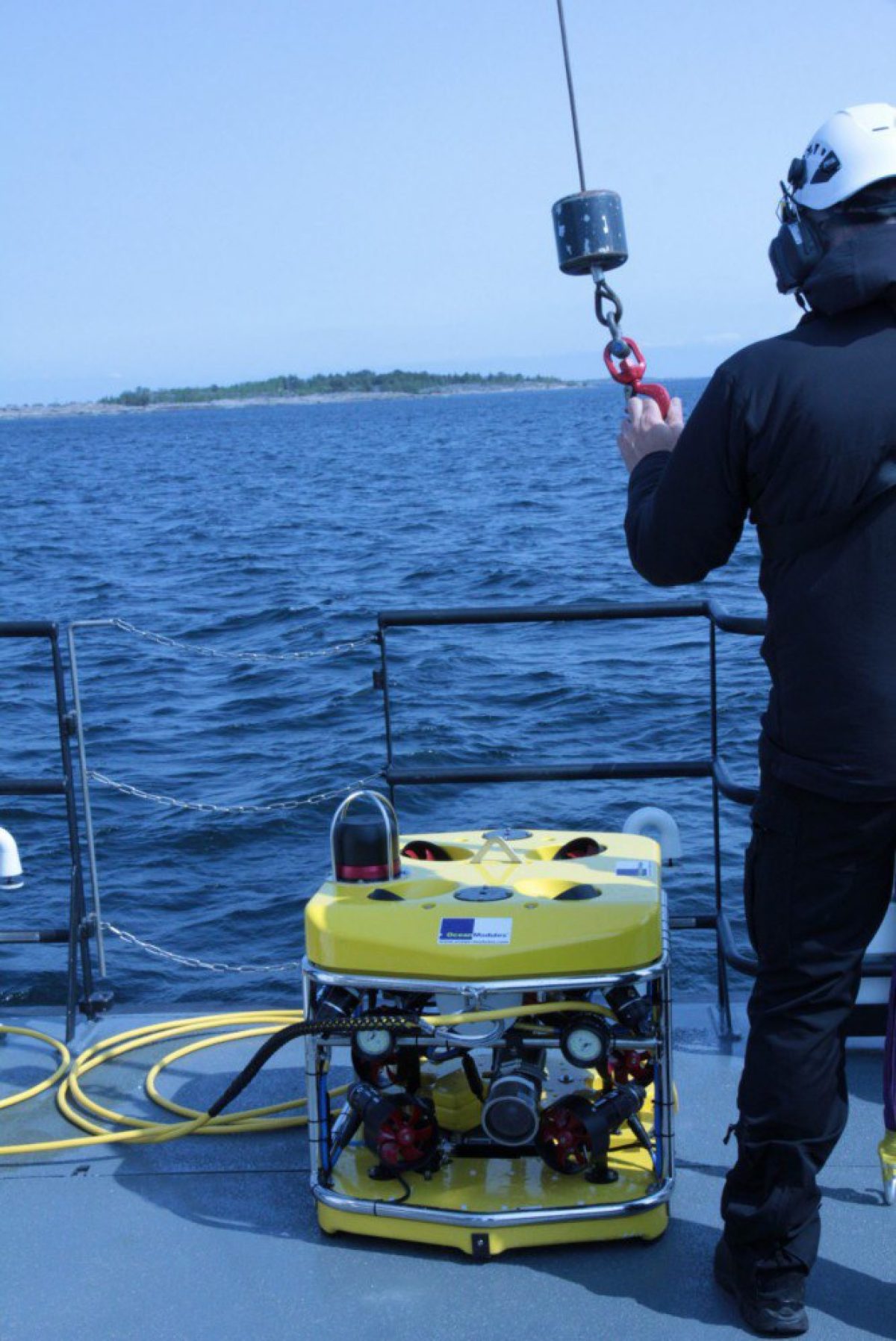
Rescue excavations on the Borstö 1 wreck – several objects lifted to safety
In May 2023, the Finnish Heritage Agency, together with the Finnish Maritime Archaeological Society and the West Finland Coast Guard, investigated the wreck of Borstö 1, which sank in the 18th century. In recent years, things have been stolen from the wreck, so items were now lifted to safety for conservation and storage. The wreck is a valuable site for research and tests for a new kind of monitoring system are under way.
The Finnish Heritage Agency visited the Borstö 1 wreck with the Finnish Maritime Archaeological Society on 18–21 May 2023. During dives, objects were retrieved from the most critical places, such as the seaman’s chest, which had been opened without authorisation. The objects are now in the Finnish Heritage Agency’s Collection and Conservation Centre, where they will be examined, conserved and added to the collections of the National Museum of Finland.
Items retrieved from the chest included three intact bottles of wine, one smaller glass bottle (possibly a medicine bottle), a shoe last, clay pipes, matches and flints (for lighting a pipe), handgun projectiles and shots, two wooden bottles, eyeglasses in a thin leather case, fragments of a wine bottle, one coin, buttons, a cutlery handle with engraving, and others.
From the middle deck cabin and the hold below it, the divers retrieved stacked copper containers, two three-legged cauldrons and one wooden container. A faience tankard broken due to disturbance and parts of the wooden box underneath it were retrieved from the aft cabin. In the aft cabin, at least part of a skeleton can now be seen, i.e. deceased number 4, which has been hidden under the structures and sediment before being disturbed.

Valuable research site and cemetery
The Borstö 1 wreck was likely originally a Dutch merchant vessel. It is located in Bodö, in the southern Archipelago Sea. The ship sank in the mid-18th century, taking its crew with it. Borstö 1 was long thought to be St. Mikael, but Riikka Alvik's doctoral dissertation has proven this to be a misconception.
The wreck was discovered already in the 1950s and its research began in the early 1960s. It was a near-perfect find. The well-preserved wreck, albeit fragile from the passage of time, is a unique discovery encompassing the ship's everyday belongings and cargo. It is also the final resting place for at least four people and a small dog, and should be respected as such.
The people who disturbed the wreck have broken some structures and objects have been stolen. Disturbances have been observed in 2020, 2021, twice in 2022, and 2023, when it was found that the aft cabin’s faience vessel, partly covered with mud, had turned into shrapnel. When objects are lost, along goes the information contained in them, which weakens the research value of the wreck. The Borstö 1 wreck is a unique representation of 18th century merchant shipping. It holds both personal and ship equipment that tell the story of life on the ship. Breaking the sea chest and stealing items has also destroyed the possibility of examining the remains of one of the people on board, which could have been used to create a profile of them.
Although excavations have been carried out on the wreck since the 1960s, investigations are still ongoing.
In recent years, the Finnish Marine Archaeological Society has used voluntary work for documenting the wreck. This has been of great importance in detecting the changes that have occurred in the wreck and in advancing the wreck's research. Now the Finnish Marine Archaeological Society is making a new 3D model of the Borstö 1 wreck. The model made in 2018 is no longer accurate because the disturbances have changed the wreck so much.
Efforts to improve the monitoring of wrecks
The Borstö 1 wreck has been granted a protective area under the Antiquities Act since 1999. Diving or anchoring within the protective area is prohibited without permission from the FHA. The aim of the protective areas is to ensure the preservation of sites of different ages and types that are important for research, so that they reflect the stages of the Baltic Sea's marine history in a multifaceted manner. Strengthening the borders of the protective area emphasises the significance of the wreck and helps to raise awareness of the need to protect the wreck also in connection with fishing and hydraulic engineering. The protective area has been confirmed for six wrecks, most recently the Hästö Busö wreck on 13 December 2022.
Wreck control is part of the statutory duties of the Border Guard, a continuously moving authority at sea. The protective areas of wrecks are monitored by the Finnish Border Guard, the Gulf of Finland Coast Guard in the Gulf of Finland, and the West Finland Coast Guard in the Archipelago Sea and the Gulf of Bothnia. Co-operation was started in the early 1970s. There is a need to improve the monitoring of significant sites of antiquities, and a new kind of monitoring system was tested for the first time at the Borstö diving camp.
“Cooperation with the Border Guard is really important for the protection of wrecks and monitoring their condition,” says Riikka Alvik, maritime archaeologist at the FHA.
Co-operation with the Coast Guard
The maritime archaeologists of the FHA also visited Borstö 1 with the West Finland Coast Guard on 24–30 April 2023. The FHA presented the site to the Coast Guard in order to increase the efficiency of monitoring. Together, they explored areas where objects have been seized, as well as places where the deceased and other sensitive finds are located. The Coast Guard’s divers also visited the wreck to orientate themselves so that it would be easier to go to the location in the future.
“It’s great that we have increased our co-operation and been able to come along to visit the ships. This year, we have inspected Huys te Warmelo off the coast of Porvoo with the Gulf of Finland Coast Guard and now Borstö 1 with the West Finland Coast Guard, ”Alvik rejoices.

The Coast Guard tested a ROV (remotely operated vehicle) and a lowlight camera on the Börstö 1 wreck. The image sent by these new ROVs is very clear. Meanwhile, low-light cameras enable use in a low-light environment.
Underwater exploration is slow and difficult because visibility is often poor. The diving time is naturally always limited. Well-preserved wrecks also tend to be located at great depths. A maritime archaeologist almost never sees their research subject in its entirety, but nowadays high-quality images and models help the research.
Additional Information
Underwater cultural heritage and the protection of wrecks
Borstö 1 in the Ancient Relics Register (in FInnish)